appears they are far weaker looking than the cheezy ones......
wondering if he would be able to snatch a shopping trolly with those???
Moderators: toaddog, TWISTY, V8Patrol, Moderators
I suggested that ( We sell those too ) but he didn't like the idea of an un-rated pin holding it all togetherjoeblow wrote:i reckon if you take that black thing out in the middle and use that point for recovery it might be the best idea.
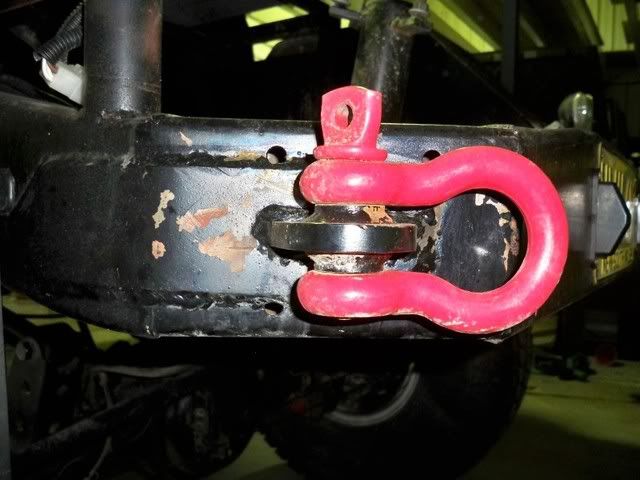
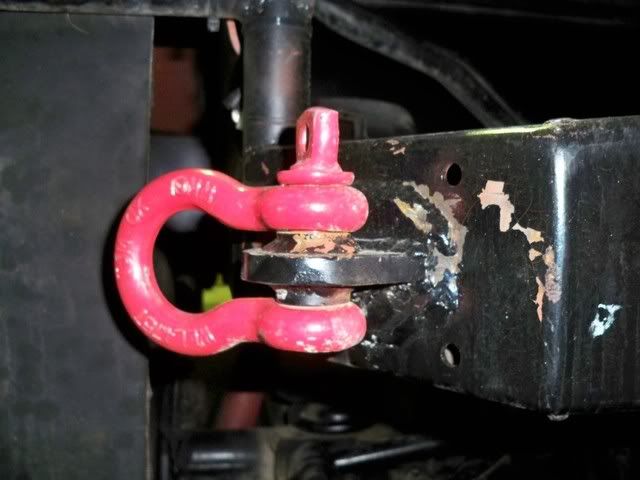
as kingy said, can you prove your weld is rated to whatever minimum specification? i'm not doubting your welding ability, but if you want to talk "rated" recovery points, it's a valid question.Black Bull wrote:As an example off what I consider an acceptable recovery point, here's a photo of one half finished
Now after that was done the entire section of the chassis was fish plated with 6mm plate back 300mm down past the bend in the chassis, around the point itself was pre-heated and stitched over the initial root weld
really?Black Bull wrote:
I never said that they "loose Tensile or loose shear" but the what I was referring to the Ductility of the bolt, a grade 4 bolt will deform to a certain point before it shears or snaps, however as the tensile strength increases the ductility of the bolt decreases or in laymans terms becomes more brittle. one of the reason I always use mild tensile bolts in bull bar mounts.
Agreed, but we've all been in situations where the only option is a pull. I'm sure we've both seen 8t Snatch straps break ?
Really ? it was a 14t Bus we had a 20t sling but unfortunately the larger shackles would not fit in the tow points. my point was that the shackle can withstand much more than it's rated load for brief periods of time, referring to to the "Peak" forces that are generated in a recovery situation
Agreed. but let it drop 30 feet and come to the end of a solidly affixed cable or chain, you'd tear the point off the chassisbad_religion_au wrote: a 4.7 tonne shackle could be used to safely AIRLIFT an entire large 4bie. day in, day out using a helecopter or a crane.
reads like your saying that high tensile bolts "have little sheer strength"...Black Bull wrote: and high tensile bolts are just that, tensile, they have very little strength when in single shear
Narrowscopeofreality wrote:. Something else will break before they do. They're made out of 20mm from memory, but I probably wouldn't go any less than 16mm.
"Turns out he's a rigger for a crane company and was Livid after complaining about the "recovery" points on the rear bar "Black Bull wrote:Funny thing today, had a customer come in after having his new rear bar fitted to his Hilux. he was looking for rear recovery points
Turns out he's a rigger for a crane company and was Livid after complaining about the "recovery" points on the rear bar and then being told to use both of them if he didn't think they were strong enough
the bar in question fitted to a Hilux (ARB Stock Image)
None of the bolt on style hooks would fit so he's gone to get some 5/8" plate welded up the sides where it mounts to the rails
semantics i know, but the chassis on a 40 series (pictured) is thicker than 3mmV8Patrol wrote: thats bolted to a 3mm chassis
without disagreeing, this is a little bit of an over simplification IMO. There is more to consider than just the thickness of each member. the design and conection of each part will play a part in the strength of the final product.V8Patrol wrote:
You've added a 20mm lug with a 8mm weld to a 6mm plate thats then welded to a 4mm plate thats bolted to a 3mm chassis
Kingy
Yeah the stupid part about that is that a boilermaker etc can't legally weld anything on a registered vehicle unless it's his own, yet a mechanic with nothing more than basic training at tafe canScrewy wrote:welds can be tested and so can strength etc, however its at high cost and the 4x4 shops wont want any part in doing that.....
Screwy
WTf???V8Patrol wrote:
and rightly so ...... you'll struggle to find any crane opperator that will use an eylet as a lifting point simply because they can not be rated for a lift.....
make ya wonder how then they are accepted for a snatching point
Since when?Breaker Brother wrote:Yeah the stupid part about that is that a boilermaker etc can't legally weld anything on a registered vehicle unless it's his own,Screwy wrote:welds can be tested and so can strength etc, however its at high cost and the 4x4 shops wont want any part in doing that.....
Screwy

And ive finally found someone who answered the original postsudso wrote:Hey Screwy this is where I put my recovery hooks. It's about the only place to put them on a cheezy style bar, on the sides of the winch cradle.
Load share plate between the hook and bar and between nuts and bar on the other side too. Used M12 hi tens and 100mm long from memory.
I left the eyelets on there. They're ok for double line winching.
I just tacked them in position so my holes in the bar and plates lined up. The hooks and tightened bolts hold them there anyway.Screwy wrote:And ive finally found someone who answered the original postsudso wrote:Hey Screwy this is where I put my recovery hooks. It's about the only place to put them on a cheezy style bar, on the sides of the winch cradle.
Load share plate between the hook and bar and between nuts and bar on the other side too. Used M12 hi tens and 100mm long from memory.
I left the eyelets on there. They're ok for double line winching.

So when you bolted those on, u welded plate both sides as well????
Screwy
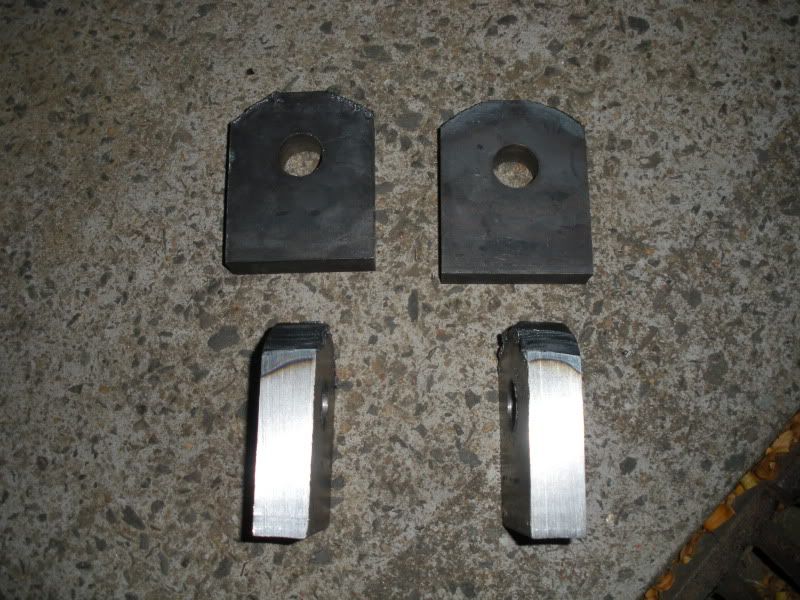
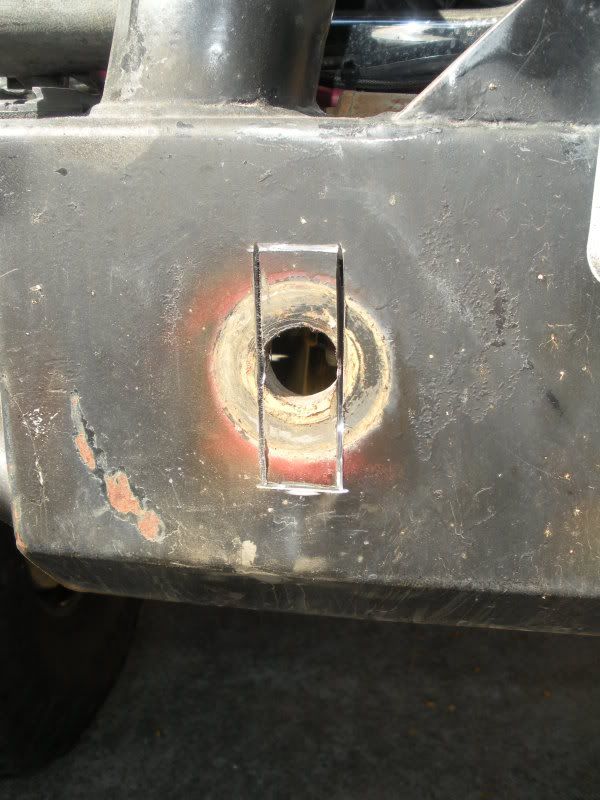
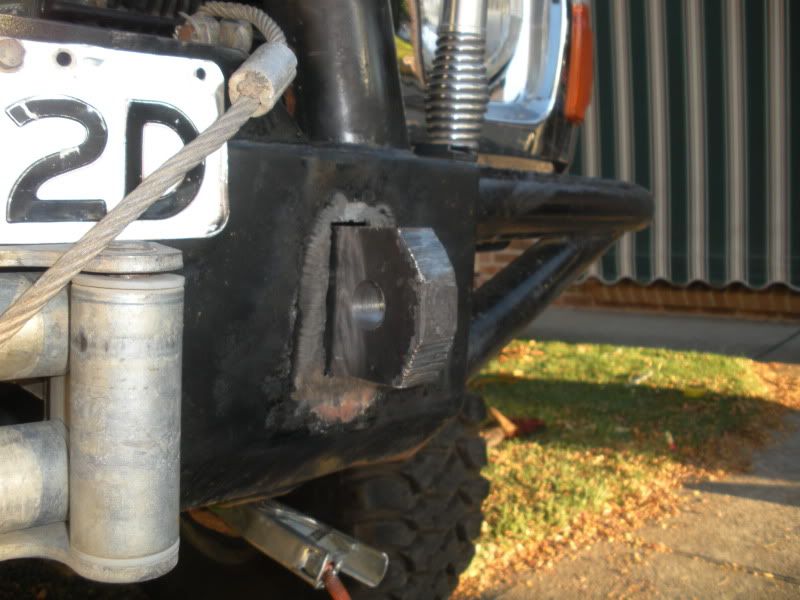
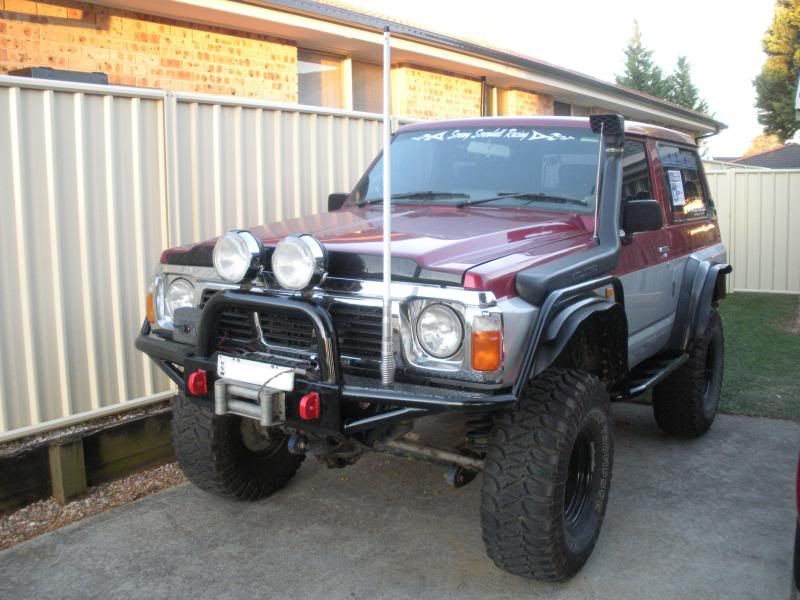
Yeh i used my mig on a very high setting to allow penetration through to the thick steel....maddog_75 wrote:looks good!
whats the preferred type of welding method for welding on the recovery points? arc, tig, mig?
Users browsing this forum: No registered users and 1 guest